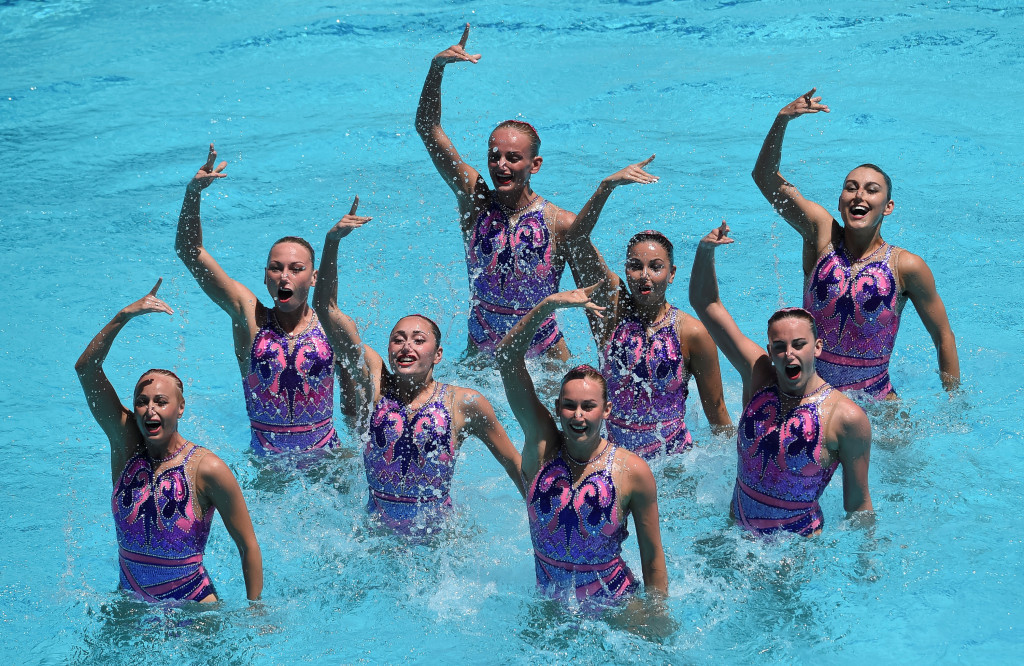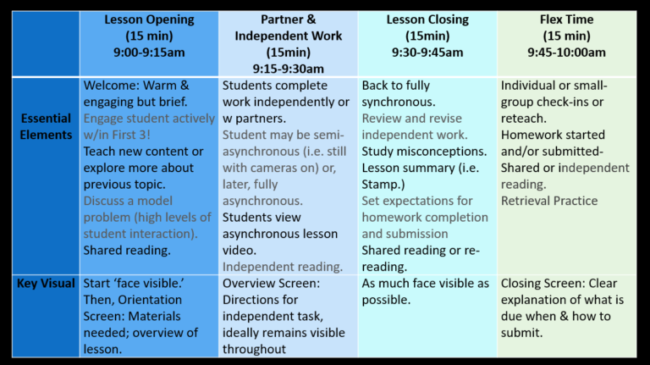07.30.20‘Semi-synchronous-ness’ is our new favorite thing

I’ve been writing a lot here lately about the synergies between synchronous and asynchronous lessons- about how they balance each other out and how a good lesson could actually be a hybrid, moving back and forth between synchronous and asynchronous activities…. it needn’t be one or the other.
After Darryl Williams put together an amazing lesson template…

…I started watching footage of teachers transitioning from synchronous Lesson Openings to asynchronous Independent Work…
And then suddenly I realized that I was wrong. That what we were looking at when teachers shifted to independent work it was not actually a transition from synchronous to asynchronous teaching but from synchronous to semi-synchronous teaching, where students did work on their own but with ‘cameras on’ and a sort of passive safety net in place.
What was working so well was in fact a third category all together.
I put together a video with two examples of what I’d call semi-synchronous lesson activities:
Eric Snider and Knikki Hernandez are the two teachers. Both lessons start synchronously and then transition to block of time where students are working on their own, but Eric and Knikki are still passively present to offer support and soft accountability… they help students to maintain their task concentration and can answer questions or gently encourage students as and if needed. Just knowing–and perhaps being reminded–that their teacher sees and caes how hard they work and whether they persist at the task makes it more likely that they will do so.
Some similarities:
Both Eric and Knikki give students a specific amount of time to work on the task for. Both teachers ask students if they need more time. Attending to time is critical. Too short and the task doesn’t get completed. Too long and student attention fades.
Both teaches then bring students back from the independent work and review immediately.
The tasks require students to use paper and pencil (or to read a book) in other words they are not looking at a screen. This is hugely important. Massive doses of screen time are hard on the brain. These moments offer refreshing breaks.
Both teachers use the transition out of synchronous teaching to ensure that students understand the task. Eric posts the directions on his screen so students can refer to it throughout while they work. Knikki very deliberately checks for understanding of the task–what are we doing? where are we writing? She asks via Cold Call. It is the only time she uses English.
Students… no, people.. are inherently more distracted and distractable online. “Learning to concentrate is an essential but ever more difficult challenge in a culture where distraction is omnipresent,” writes Maryanne Wolf. Both teachers here are socializing sustained periods of work that reinforce strong attention and they are able to hold students lovingly accountable for maintaining that attention.
